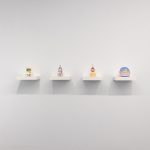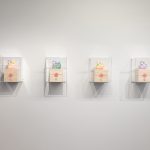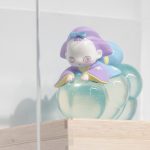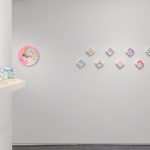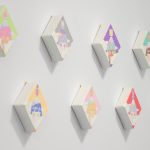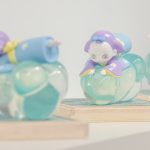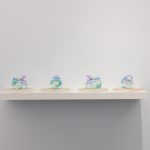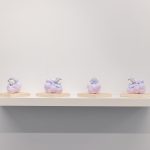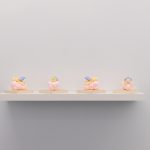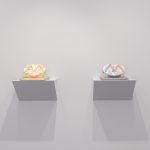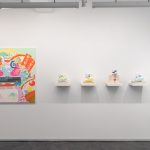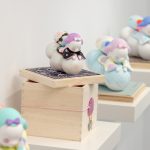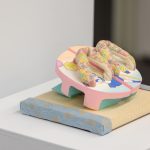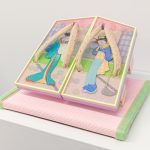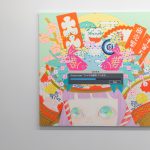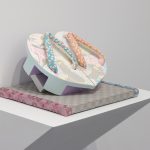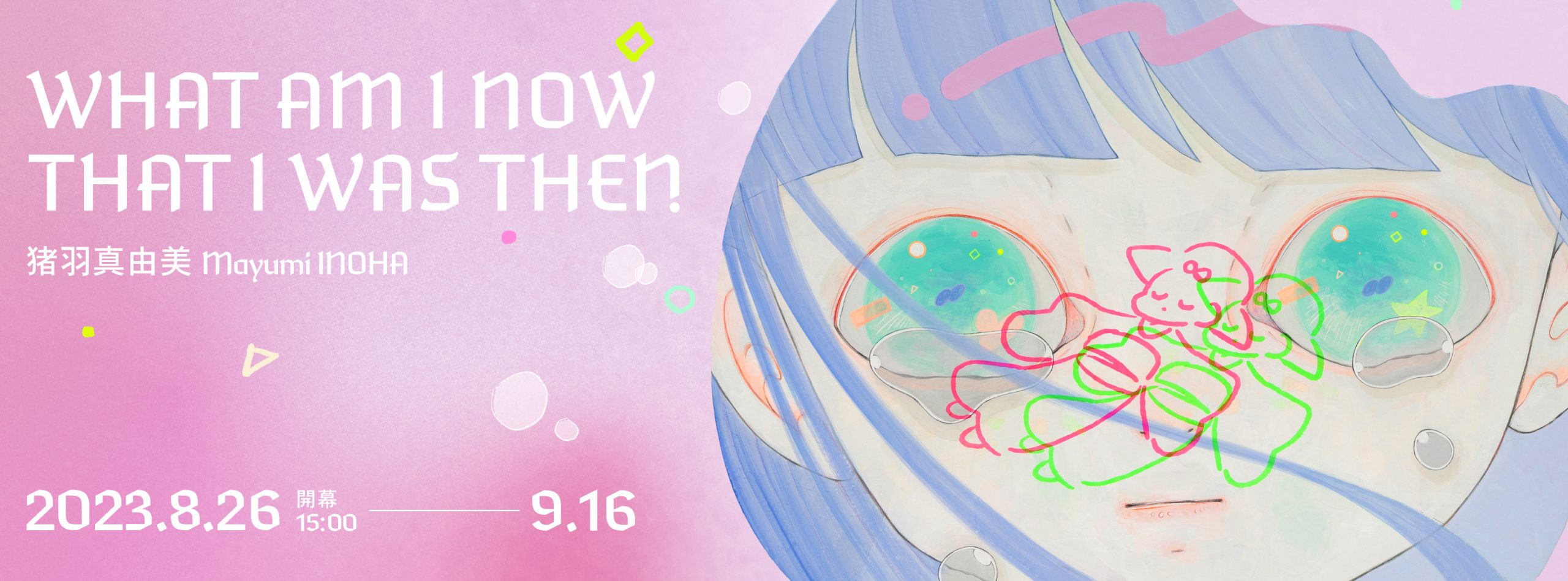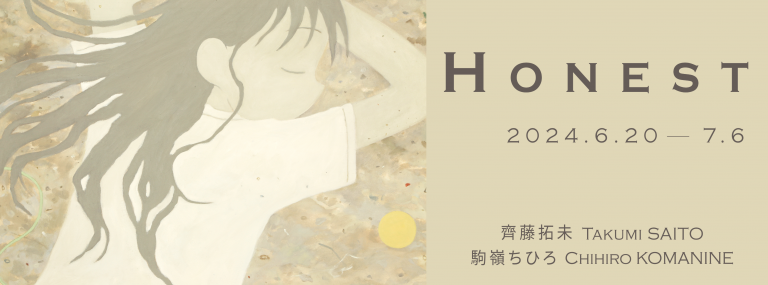–
▸ 2023.08.26 – 09.16
▸ Mon.- Sun. 10:00-19:00
–
猪羽真由美二度於雲清藝術舉辦個展「What Am I Now That I Was Then」,展出多件平面創作及立體作品,包含木屐繪畫以及以春、夏、秋、冬四季為題的版次雕塑,作品細緻別具特色。
展名「What Am I Now That I Was Then」是藝術家對自我的提問亦是回應。近兩年來 NFT 、AI 衍生藝術強勢進入大眾的視野,新興藝術創作與傳播型態的競逐,也讓關於創作的本質與創作者主體性的討論再次湧現,平面設計出身的猪羽尤其感受深刻。在這些思考的驅使之下,本次展覽嘗試呈現過去這段期間猪羽創作中數位和類比的錯綜互文,並著重於可以被親眼觀看、撫觸、感知氣味和質地的作品,形式更加豐富多元,與繽紛迷離的想像交織在一起。
展覽的主角是猪羽創造的日本游女角色 — AGEMAKI Chan,在吉原遊廓中度過四季,雖然與外界隔絕,但藉著和服上的圖案依然展現了時序的變化,雲朵則寄予了她對外面世界的嚮往。這也是猪羽首次使用噴槍進行塗裝,賦予作品與用畫筆上色截然不同的質感效果,包裝的桐木箱製作也非常用心,上蓋的榻榻米刺繡採用了台灣傳統窗花圖騰,除了呼應游女們在張見世(はりみせ,類似櫥窗)內招攬客人的樣貌,也是為了這次個展特別加入的台灣元素設計。
受歡迎的木屐系列持續推出新作,同樣由手繪取代過往以電繪為主的創作模式,工時大幅增加。畫面擷取浮世繪常出現的元素為基礎,致力於創作現代版的肉筆浮世繪(にくひつうきよえ),木屐也是一方自由有趣的畫布。
We are pleasant to announce Inoha Mayumi’s second solo exhibition, “What Am I Now That I Was Then,” is on view at the Elsa Gallery. The exhibition showcased a variety of two- and three-dimensional works, including painted wooden getas and seasonal-themed figures representing spring, summer, autumn, and winter. Her works are characterized by their intricate details and unique style.
The exhibition title, “What Am I Now That I Was Then,” reflects the artist’s introspection and response to her own identity. With the rapid emergence of NFTs and AI-generated art in the public eye over the past two years, discussions about the essence of creation and the subjectivity of creators have resurfaced. Inoha Mayumi, who comes from a background in graphic design, particularly resonates with these thoughts. Motivated by these reflections, the exhibition attempted to present the intricate interplay between digital and analog aspects in Inoha Mayumi’s creations during this period. The focus was on works that can be observed, touched, smelled, and felt, adding a diverse range of forms that interweave with vivid and imaginative elements.
The feature of the exhibition is AGEMAKI Chan, a Japanese courtesan character created by the artist, who experiences the four seasons within the Yoshiwarayukaku (吉原遊廓) pleasure quarter. Despite being isolated from the outside world, the patterns on her kimono still depict the passage of time, while the clouds symbolize her yearning for the world beyond.
This is also the first time Inoha Mayumi utilized spray painting techniques, giving the artworks a texture distinct from her previous brush-painted works. The wooden packaging box was meticulously crafted, with its top cover featuring Taiwanese traditional window flower motifs. This design not only resonates with the appearance of courtesans enticing clients from behind glass windows but also incorporates a Taiwanese element unique to this exhibition.
The popular series of painted wooden geta continues with new pieces, which were also hand-painted instead of relying solely on digital methods as in the past. This transition significantly increased the amount of work hours required. Drawing inspiration from common elements found in ukiyo-e woodblock prints, Inoha Mayumi strives to create a modern version of the traditional hand-painted ukiyo-e. The wooden getas serve as a canvas that offers both freedom and amusement for her artistic expression.




